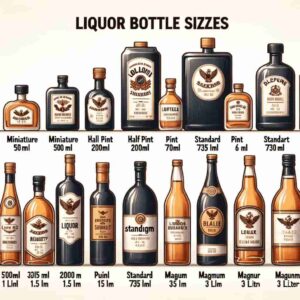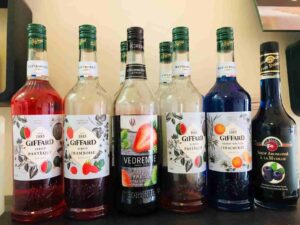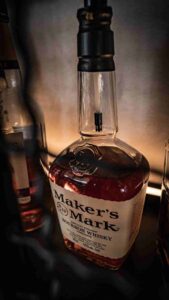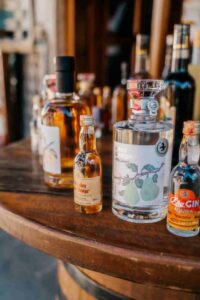How much is 750ml in ounces weight? How many ounces is 1.75 L in total? How many shots are in a pint? These answers can be used to count and control your inventory. We looked at the most common sizes of liquor bottles to do this. We then broke down everything into shots and milliliters. This blog will have many numbers, but they’ll be useful. Pairing these numbers with real-life examples will make them easier for you to remember. There are different sizes to suit different preferences and requirements. Distillers, retail stores, and customers need to know what size liquor bottles are. There are many sizes available, including unique and standard. This blog will explore the different sizes of liquor bottles. Smilebottles offers a variety of products to help differentiate spirits and attract customers. Our design and resource expertise allow us to source or create the bottles that best suit your brand. Our packaging partners will help you with your spirit.
Different Liquor Bottle Sizes
The world of liquor bottles offers a diverse range of sizes, each serving a unique purpose in packaging. Understanding these standard sizes for beauty and skincare businesses can greatly enhance product presentation and customer appeal. This guide provides a detailed overview of standard liquor bottle sizes, helping you make informed decisions for your packaging needs.
In the world of spirits and liquor, bottle sizes not only represent quantity but also signify the intended use, market, and sometimes the quality of the beverage inside. This guide aims to demystify the various sizes of liquor bottles available in the market.

▶ Standard Liquor Bottle Sizes
|
Bottle Types |
Milliliters | Ounces | Uses |
| Miniature (Mini, Nip, Shooter) | 50ml | 1.7oz | Sample tasting, promotional giveaways, airline service. |
| Half Pint (Demi, Flat) | 200ml | 6.8oz | Single-person consumption, travel-friendly option. |
| Pint (Half Bottle) | 375ml | 12.7oz | Small gatherings, personal use. |
| Standard (Fifth) | 750ml | 25.4oz | The most common size for consumer purchase, ideal for small parties. |
| Liter | 1000ml | 33.8oz | Bars and restaurants, due to its larger volume. |
| Magnum | 1.5L | 50.7oz | Large gatherings, and events, as a gift option. |
▶ Specialty Sizes
| Bottle Types | Milliliters | Ounces | Uses |
| Half Gallon (Handle) | 1.75L | 59.2oz | Bulk consumers, large parties. |
| Double Magnum | 3L | 101.4oz | Special occasions, collector’s items. |
| Jeroboam | 4.5L | 152.1oz | Large-scale events, luxury establishments. |
| Methuselah | 6L | 202.9oz | Exclusive events, display purposes. |
Understanding the different sizes of liquor bottle is essential for consumers, collectors, and businesses alike. It helps in making informed decisions and catering to specific needs. Whether it’s a miniature for a personal tasting or a Jeroboam for a grand celebration, there’s a bottle size for every occasion.
How Many Ounces and ML Are in a Shot?
A “shot” is a measure of alcohol often used in serving and mixing drinks. The size of a shot can vary based on the country or even the specific bar or restaurant.
▶ United States
○ Standard Shot: In the U.S., the standard shot size is 1.5 ounces.
○ In Milliliters: This is approximately 44.3 ml.
○ Variations: Some establishments may serve a “standard” shot as 1 ounce (about 29.6 ml) or up to 2 ounces (about 59.2 ml), especially in the case of a double shot.
▶ United Kingdom
○ Standard Shot: The UK legally defines a single shot size, typically as 25 ml. However, some places use 35 ml.
○ In Milliliters: Directly 25 ml or 35 ml.
○ Pub Measures: Pubs and bars in the UK might have both measures available, and the choice is often given to the customer.
▶ Europe and Other Regions
○ Variability: In many parts of Europe, a shot can range from 20 ml to 60 ml. Countries like Germany, Hungary, and Poland might serve larger shots, often 40 ml or more.
○ Cultural Differences: The concept of a shot and its size can vary significantly from one culture to another. For example, in Italy, a shot might be smaller, aligning more with a tasting quantity.
▶ Additional Considerations
○ Double Shots: Commonly, a double shot is simply double the volume of a standard shot. In the U.S., this would typically be 3 ounces (about 88.7 ml).
○ Cocktail Recipes: When making cocktails, it’s essential to consider the standard shot size, as it affects the balance of the drink’s ingredients.
○ Responsible Serving: Understanding shot sizes is also crucial for responsible alcohol serving and consumption.
Around the world, there are many different definitions of “shot”. The US and UK may use more standard measures while other regions might have a broader range. This variation is important for both serving spirits and preparing cocktails.
This detailed information can help your readers understand how the shot size can affect alcohol consumption and cocktail creation.

How Many Ounces in 750 ML?
There are approximately 25.36 ounces in 750 milliliters. This conversion is based on the standard measurement that 1 ounce is equivalent to 29.5735 milliliters.
The 750ml size is very popular for liquor bottles. It’s often called a standard bottle or a fifth (because it’s about one-fifth the volume of a gallon). This is a standard size for wine and spirits around the world.
How Many Shots In a 750ML Bottle?
You need to know how big the shot is to calculate the number of shots that are contained in a 750ml container. Shot sizes vary depending on the country or establishment. For this calculation, let’s use a standard U.S.-size shot.
A 1.5-ounce shot contains approximately 44.36ml.
A 750ml bottle contains approximately 750/44.36 = 16.91 shots.
A standard 750ml bottle contains 17 shots if you use the standard US shot size of 1.5 ounces. This number may change if you use a different size shot.
What Is a Fifth of Liquor?
In the alcohol industry, a “fifth of liquor” is the size of a bottle. In the past, it was used to describe a bottle that was one-fifth a U.S. Gallon. This is equivalent to approximately 757 ml. With the switch to metric measurement, the standard size of the bottle was rounded up to 750ml. This is the most common size of bottle for wine and spirits in the world.
The term “fifth”, despite the small difference in volume, is still used to describe a 750ml bottle. This is the most popular size of bottle for consumers and is considered standard in many countries.
How Many Drinks in a Fifth?
To determine the number of drinks in a fifth (which is 750ml) of liquor, we must first define a drink. The type of drink can affect the size. The standard is to use common serving sizes of various types of alcoholic beverages.
▶ Hard liquor or Spirits:Standard drinks are typically 1.5 ounces (44 ml). In a 750ml bottle, which is approximately equivalent to 25.4 ounces, there are 25.4/1.517 standard drinks.
▶ For Wine:The standard size of a glass of wine is around 5 ounces or 150 ml. This is 750/150 = 5 standard glasses in a 750ml bottle.
▶ For Beer:The standard beer serving size is 12 ounces (355 ml). This calculation is not as relevant in the context of a five-sized bottle of liquor, because beer is rarely served in this size. |
 |
In a fifth of alcohol, you will get 17 standard drinks when serving spirits or 5 standard glasses when serving wine. The number of drinks may vary depending on how much liquor is used.
How Many Shots in 375 ML?
To calculate how many shots are in a 375 ml bottle, we’ll use the standard U.S. shot size, which is 1.5 ounces, or approximately 44.3 ml. Here’s the calculation:
Standard U.S. Shot Size: 1.5 ounces (approximately 44.3 ml)
Conversion of 375 ml Bottle: 375 ml / 44.3 ml per shot ≈ 8.47 shots
So, in a 375 ml bottle, which is also known as a pint, there are approximately 8 to 9 standard shots, depending on the exact measurement of the shot.
How Many ML, Ounces, and Shots in a Liter?
A liter of liquid, a common volume measurement especially in many countries outside the United States, contains a specific amount of milliliters, ounces, and shots. Here’s the breakdown:
▶ Milliliters in a Liter:
1 liter = 1000 milliliters (ml)
▶ Ounces in a Liter:
1 ounce is approximately 29.5735 ml.
Therefore, 1 liter = 1000 ml / 29.5735 ml per ounce ≈ 33.814 ounces
▶ Shots in a Liter:
If we consider the standard U.S. shot size of 1.5 ounces (approximately 44.3 ml):
1 liter = 1000 ml / 44.3 ml per shot ≈ 22.57 shots
Rounding off, you get approximately 23 shots in a liter.
These conversions can be useful when converting between different beverage sizes, such as in bartending or event planning. The number of shots reflects the standard U.S. shot size but may differ in other countries.
Frequently Asked Questions About Liquor Bottle Sizes
What are the Sizes of Vodka Bottles?
Like many spirits, vodka is available in different bottle sizes. The sizes are available for a variety of needs, including individual consumption or large parties. Here is a list with the most common sizes of vodka bottles:
|
Miniature (50 ml): Used for small servings, minibars, or tastings. Quarter Pint (100 ml): Used for promotional items or individual servings. Half pint – 200ml: Ideal for personal use and small gifts. Pint (375 ml): This is a medium-sized bottle, perfect for small parties or gifts. Fifth – 750ml: This is the most popular and standard size of vodka bottle, perfect for parties. The larger volume of 1000 ml (1L): is preferred in bars and restaurants. Magnum – 1.5 liters (1500ml): Ideal for large gatherings or events. Also used as a gift. Half Gallon with Handle – 1.75 Liters (1750ml): This is a larger size, ideal for parties or frequent use. It often includes a handle. Double Magnum: 3 liters (1000 ml): Perfect for large parties or special events. Jeroboam-4.5 liters (4500ml): For large events or venues with high-end decor. |
 |
These sizes are available in different brands and regions. Vodka brands use different bottle sizes to cater to specific markets or limited editions. Some brands may offer special sizes or bottles that are specially designed for collectors’ items or promotional purposes.
How Many Shots in A Standard Liquor Bottle?
The number of shots in a standard liquor bottle depends on the size of the bottle and the size of the shot being poured. In many countries, including the United States, the standard size for a liquor bottle is 750 ml, often referred to as a “fifth.” To calculate the number of shots from this:
Standard U.S. Shot Size: 1.5 ounces, or approximately 44.3 ml.
Calculation for a 750 ml Bottle: 750 ml / 44.3 ml per shot ≈ 16.92 shots.
So, a standard 750 ml bottle of liquor contains approximately 17 shots, if using the U.S. standard shot size of 1.5 ounces. This number will vary if a different shot size is used, as shot sizes can differ in other countries.
Which Type of Alcohol Holds the Title of Being the Most Widely Consumed?
The title of the most widely consumed type of alcohol varies depending on the source and the specific metrics used (like volume, sales, or number of consumers). However, generally:
○ Beer: Beer is often considered the most widely consumed alcoholic beverage globally. Its popularity spans diverse cultures and countries, attributed to its wide variety of styles, relatively low alcohol content compared to spirits, and its social and cultural significance in many societies.
○ Wine and Spirits: In some regions, wine or spirits may surpass beer in popularity. For instance, wine is extremely popular in countries with a strong wine-making tradition, like France, Italy, and Spain. Spirits, such as vodka, whiskey, and rum, also have significant popularity in various parts of the world, with certain countries or regions favoring a particular type.
These preferences can be influenced by cultural, economic, and geographical factors. Additionally, trends in alcohol consumption can change over time due to factors like marketing, availability, and shifts in social habits.
Are Spirits Universally Available in Identical Bottle Sizes?
|
Spirits do not come in one standard bottle size throughout the world. Although there are standard sizes such as 750ml, 1 liter, and 1.75-liter spirits bottles available worldwide, their availability varies significantly due to regulatory standards, cultural practices, and market preferences.
In the United States, standard bottle sizes for spirits typically are 750ml; while many European countries tend to favor 700ml bottles as standard. Furthermore, each country may also have specific sizes that aren’t commonly found elsewhere.
Some spirits brands and types may also offer limited edition bottles for collectors or to target specific market segments, depending on local regulations, packaging needs, and consumer preferences. These differences in bottle sizes could have collector-edition status or cater to particular market niches. |
 |
What Amount of Alcohol Consumption Is Generally Regarded as Moderate?
Moderate alcohol consumption may differ slightly among health organizations and countries, though general guidelines exist that are widely accepted. Moderate drinking may include: Men can consume up to two standard drinks daily while women should limit themselves to one standard drink per day.
A “standard drink” generally refers to:
12 ounces of beer (with an approximate 5% alcohol content).
5 ounces of wine (containing around 12-13% alcohol content).
Notably, these guidelines do not represent recommendations to drink alcohol, but instead are limits for those who choose to consume alcoholic beverages. Moderate drinking takes into account individual differences when determining appropriate limits; its definition recognizes some people should avoid alcohol altogether such as pregnant women, those taking certain medications, and people living with certain medical conditions as well as individuals recovering from addiction.
Before making decisions about alcohol consumption, it’s crucial to carefully consider personal health, family history and consult healthcare providers.
Are The Sizes of Liquor Bottles Uniformly Standardized Across the Globe?
Sizes of liquor bottles do not adhere to an industry-wide standard across the board; while certain familiar and widely accepted sizes exist, individual country and regulatory standards often dictate different bottle dimensions for sale in stores.
Common Sizes: Globally, the most frequently seen sizes include 750ml bottles as a “fifth,” which have become standard across countries worldwide.
Regional Differences: 700ml bottles are increasingly prevalent across Europe due to the adoption of the metric system and regional regulations, particularly for spirits. This trend could be considered an exception elsewhere.
Legal and Regulatory Considerations: Different countries have various legal standards and measures regarding alcohol packaging that could influence bottle sizes available for sale and distribution. Some nations might even enact regulations specifying standard bottle sizes that need to be sold and distributed in stores or sold online.
Market Preferences: Consumer preferences and market demands play an integral part in deciding bottle sizes, particularly where drinking habits or purchasing patterns vary between regions. A smaller or larger bottle could become increasingly popular depending on these cultural aspects or purchasing trends.
Special Editions and Variations: Additionally, liquor manufacturers sometimes produce limited-edition bottles in nonstandard sizes that do not match up to industry norms.
Due to this complexity, while there may be globally accepted sizes, no universal standard exists that applies universally across countries.
Is There a Cost Advantage to Purchasing Liquor in Larger Bottle Sizes?
There is a significant cost benefit to buying larger bottles of liquor. This is due primarily to economies of size and packaging efficiency, both factors that are present in many consumer products. Consider these key factors:
|
Price Per Volume: In general, if you buy a bigger bottle of liquor the price per volume (like an ounce or milliliter) is lower. The price per unit of volume is lower when you buy a larger bottle.
Costs of Packaging and Production: A larger bottle does not have a higher cost to package and produce than a smaller one. The savings in cost from the higher volume can then be passed onto the customer.
A longer supply: By buying in bulk, you can reduce the frequency of purchases and save money on transportation.
Bulk Discounts and Special Offers: In wholesale or club shops, larger bottles may come with special offers or additional discounts, further increasing their cost-effectiveness.
Applicability to Regular Consumers: Larger bottles are more convenient and offer better value for bars, restaurants, or regular users of a specific liquor. |
 |
It’s also important to take into account your own needs and habits. Although larger bottles are cheaper, they may not be suitable for everyone because of storage problems, a desire for variety, or infrequent use. Once a bottle has been opened, its quality can diminish over time. Therefore, larger bottles may not be appropriate for people who drink liquor occasionally.
Does The Size of a Liquor Bottle Influence the Aging Process of The Spirits Contained Within?
The aging process largely occurs before bottling; thus size does not play an influential role. Here is how this works:
Before spirits like whiskey, cognac, and rum are bottled, they undergo the aging process in barrels that provide color, flavor, and character enhancement through interaction between the spirit in the barrel and the wood grain. Once bottled, the aging process is effectively stopped; provided the spirit is stored and sealed appropriately, its character should remain.
Bottle sizes have an impactful impact on how long spirits remain fresh once opened. Larger bottles contain more volume, meaning more alcohol that will react with oxygen once the bottle has been cracked open, potentially altering flavor profiles over time, especially if stored for an extended period after being opened.
Oxidation can be a problem after opening your bottle, particularly with smaller bottles which have more surface-area-to-volume ratio than larger bottles and therefore have the potential for quicker oxidation reactions when opened. This issue tends to affect more spirits than wines.
After bottling, the quality and durability of spirits depends more on storage conditions (temperature, light exposure, seal quality etc) than on bottle size alone.
Size does have some influence over the spirit once opened, but not during its ageing process in barrels prior to bottling. Proper storage is essential in maintaining top-quality spirits from any size bottle.










